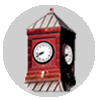Dr. Michael Bitzer: What to look for in pool of voters this fall
Published 12:00 am Sunday, July 17, 2016
Based on the North Carolina State Board of Elections data file from July 2, the state’s voter pool stands at a little over 6.6 million voters, of which 5,449,202 are considered active, with the remaining 1,170,687 considered inactive (meaning, they have not responded to requests for confirmation from their county board of elections).
In the last presidential election year, there were 6.2 million registered voters in July 2012. The subsequent monthly increases in registered voters from 2012 were 1 percent for both July to August and August to September, with a 2 percent increase from September to October and October to November.
If the 2012 trend is comparable to this year’s registration numbers, then a potential 6.9 million voters could be registered by the close of registration this year (25 days before the election).
However, one of the key differences is the lack of same-day registration as an option for 2016, unlike in 2012, unless a federal court decides to let same-day registration stand for this year’s election.
So far, registered Democrats are 40 percent of voters (active and inactive), Republicans are 30 percent, unaffiliated voters are 29 percent, and registered Libertarians represent 0.4 percent of the voter pool.
In analyzing the party-registered voters between active and inactive voters, the greatest inactive percentage belongs to registered Libertarian voters (21 percent are inactive) and registered unaffiliated voters (20 percent are inactive).
It’s not surprising, in this partisan environment, that the partisan registered voters are remaining active and tend to have the greater turnouts when casting ballots, compared to unaffiliated registered voters.
Urban vs. rural
One of the key political trends in North Carolina has been the growing divide between urban and rural areas. With an estimated 13 counties delivering 50 percent of the general election ballots this fall, the voter pool is significantly weighted to urban counties (54 percent of registered voters reside in an urban county), with Democrats being a plurality (43 percent), and registered Republicans being only 27 percent in urban counties.
In suburban N.C. counties (which contain 20 percent of the state’s voters), registered Republicans are a greater percentage than registered Democrats and unaffiliated voters, while in rural counties (which is barely one-quarter of all registered voters), registered Democrats are the plurality — however, the conservative nature of rural Democrats means that Republican voting behavior may be more pronounced than in its registration numbers.
Among the 145,000 registered Hispanic/Latino voters in the state, the party affiliation breaks decidedly against the Republican Party: 43 percent are registered as Democratic, 40 percent unaffiliated, and only 16 percent are registered GOP. This could be significant in a closely contested state, especially if Clinton continues the sizable advantage among this growing population as Obama did. Currently, the Pew Research Center notes that Hispanic voters are breaking 66 percent to 24 percent for Clinton over Trump.
Age differences
Finally, one of the subtle, yet significant, changes is the generational shift between Millennials and Baby Boomers. Currently, over a third of the registered voters belong to those who are between 51 and 71 years old, while nearly 30 percent of registered voters are under the age of 35.
If a similar rate from 2012 occurs this year, Millennials should tie Baby Boomers with the same percentage of registered voters in the pool, while a quarter of voters are members of Generation X, and the remainder (and declining percentage) are of the older Silent Generation.
One of the key factors, however, of this generational shift will be the turnout among the different cohorts, and the traditional pattern is that older voters have a higher turnout rate than younger voters. For Republicans, it is crucial that this pattern remain, due to the fact among Millennial voters, only 25 percent are registering with the Republican Party, a significant drop-off in comparison to other generational cohorts.
In looking at the racial profile and party registration of each generation, the Millennial generation is the most diverse generation of the four cohorts, with only 62 percent identifying as white; this compares to 68 percent for Gen Xers, 74 percent for Baby Boomers, and 82 percent for the Silent Generation.
As noted in a recent column by Al Hunt, it’s important not just to remember the different racial and demographic breakdowns for this upcoming presidential contest, but also generational differences between “those in the dawn of their political participation and those in their twilight.”
It’ll be significant if the projected rise in registered voters mirrors 2012’s final 4 months, although that may not play out due to disenchantment with both party’s presidential nominees.
Dr. Michael Bitzer is provost and professor of politics at Catawba College. This column is from the blog he writes for WFAE radio, The Party Line.

